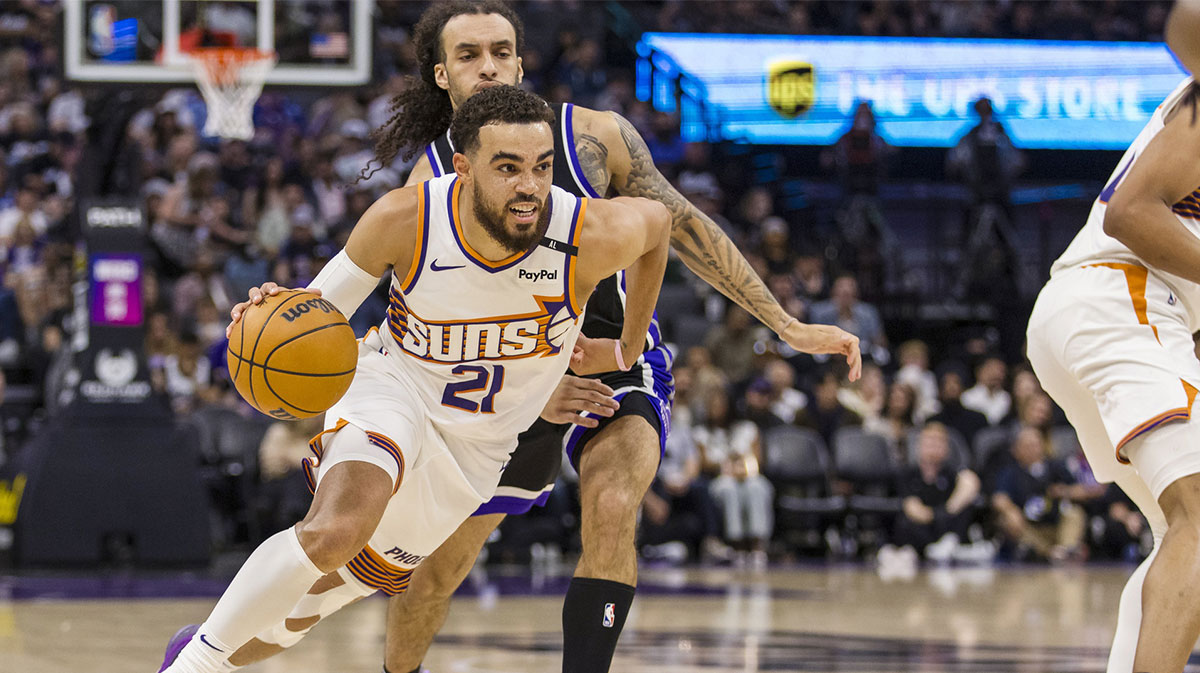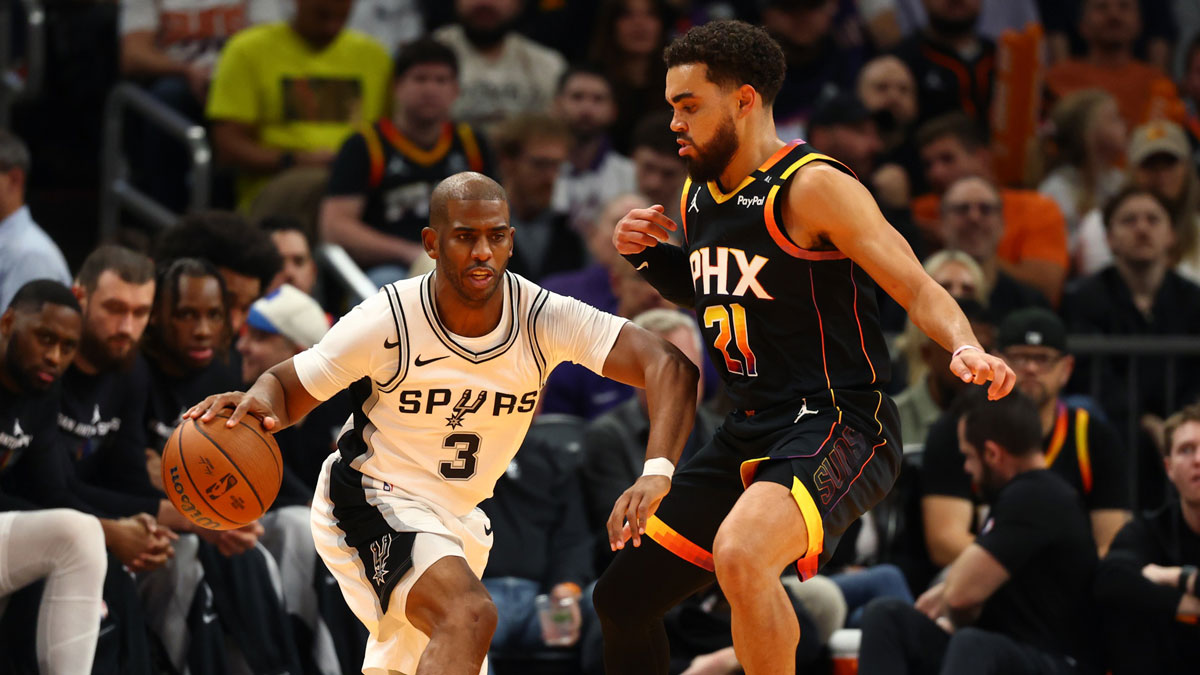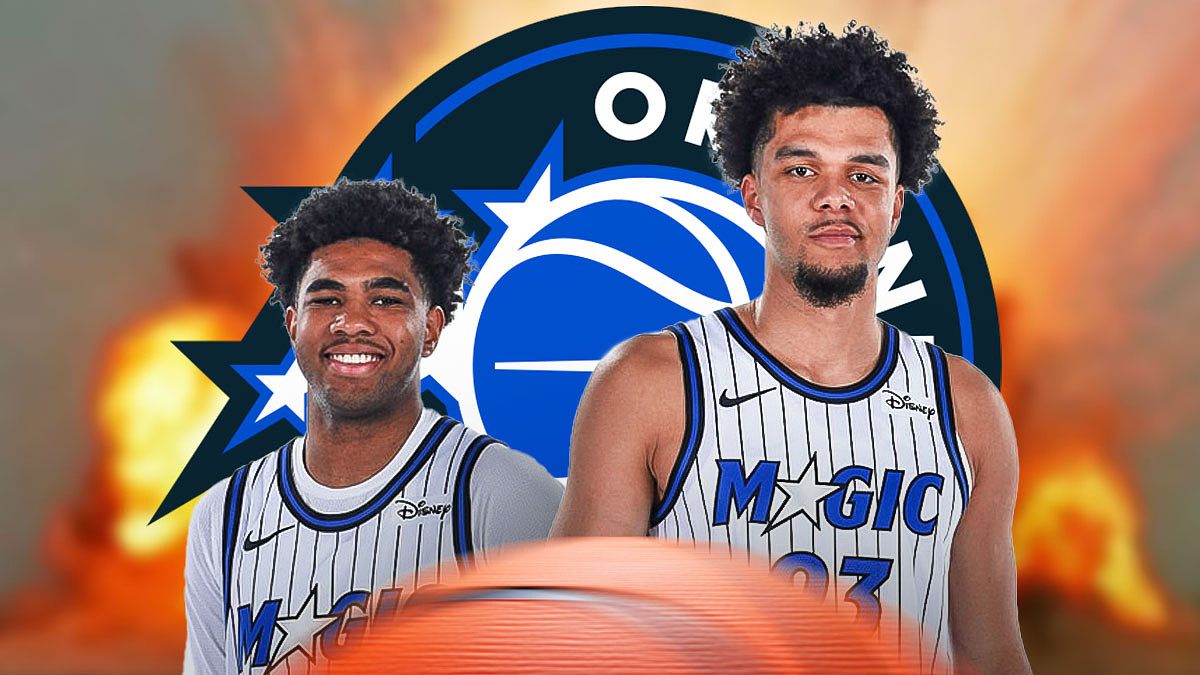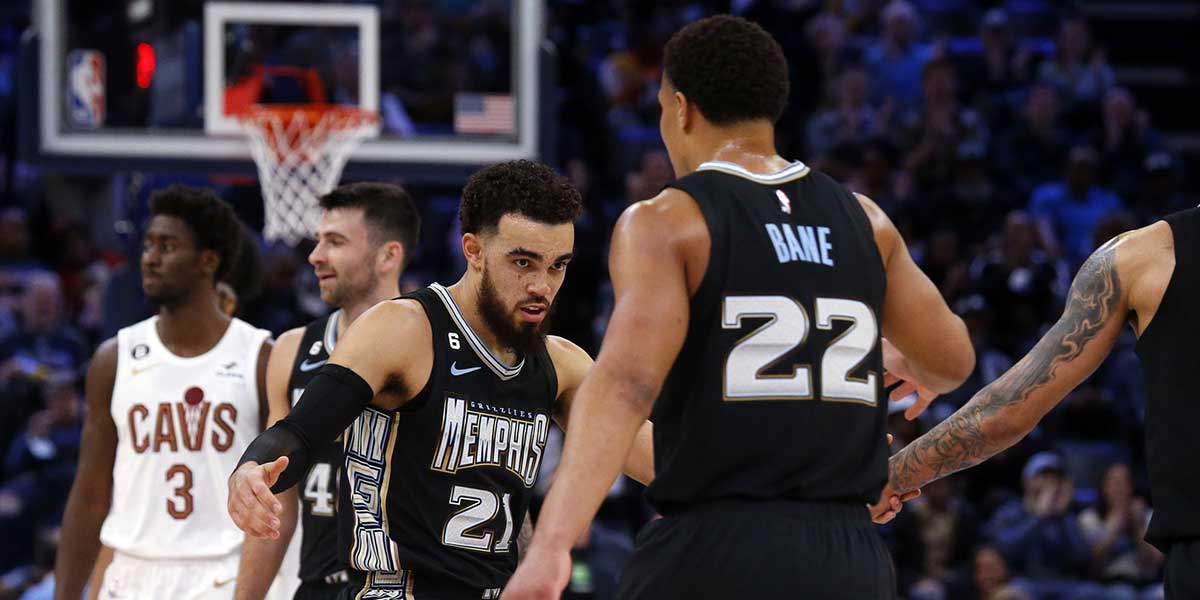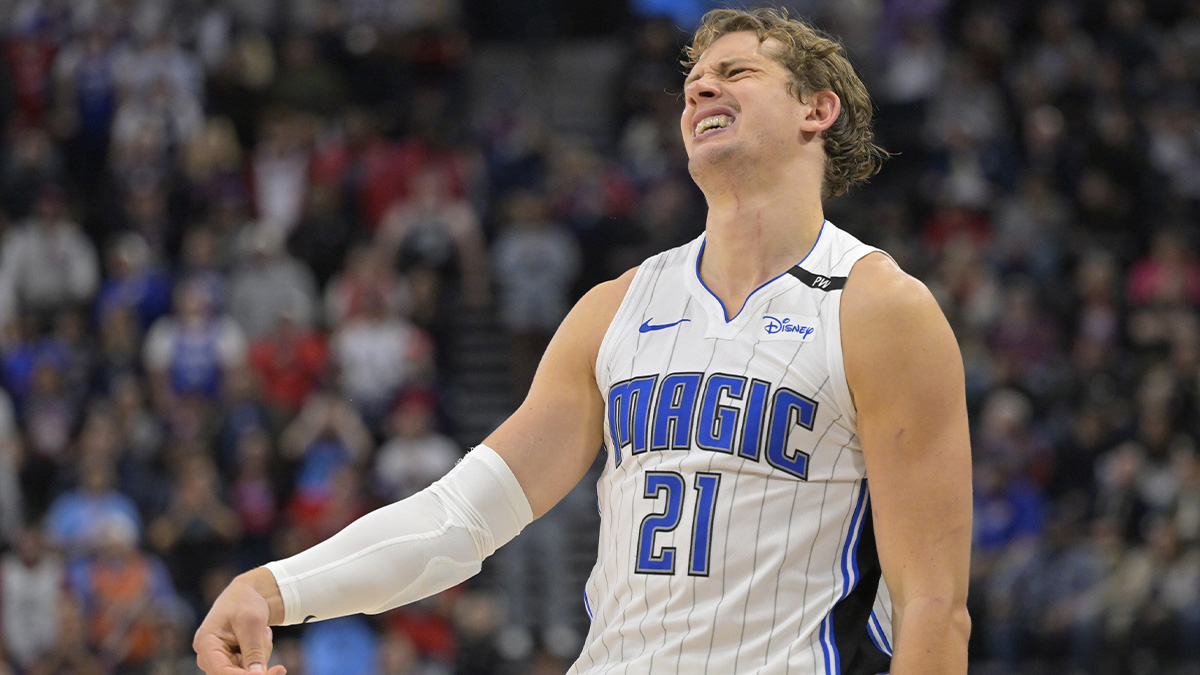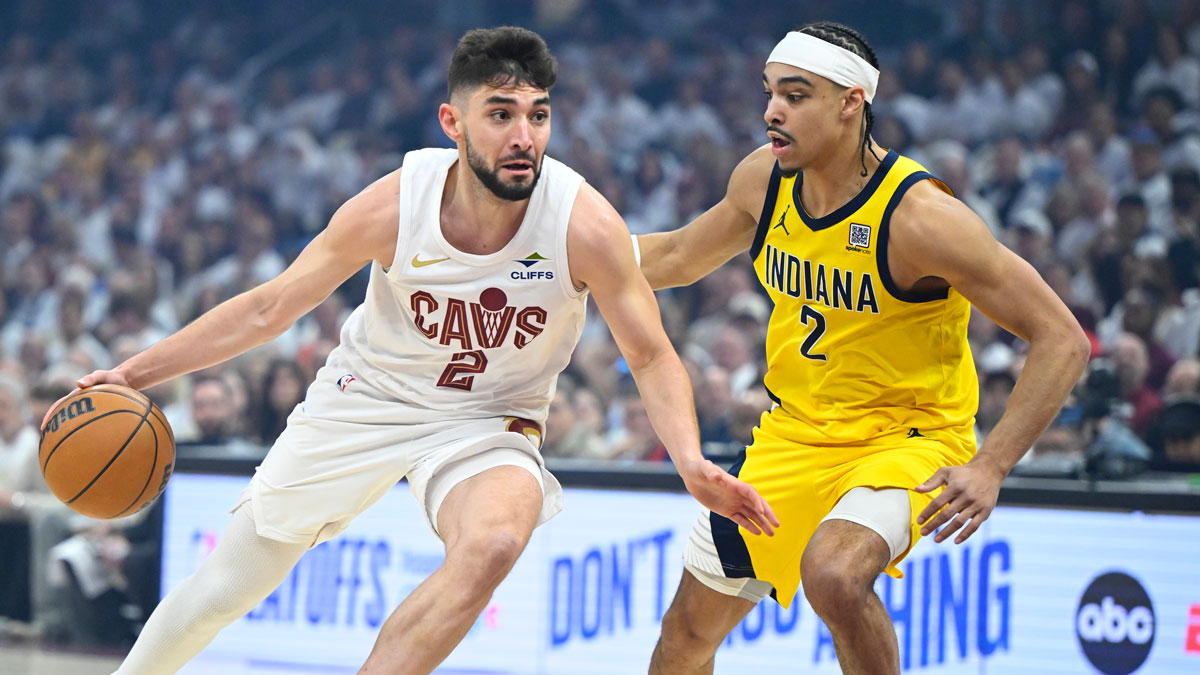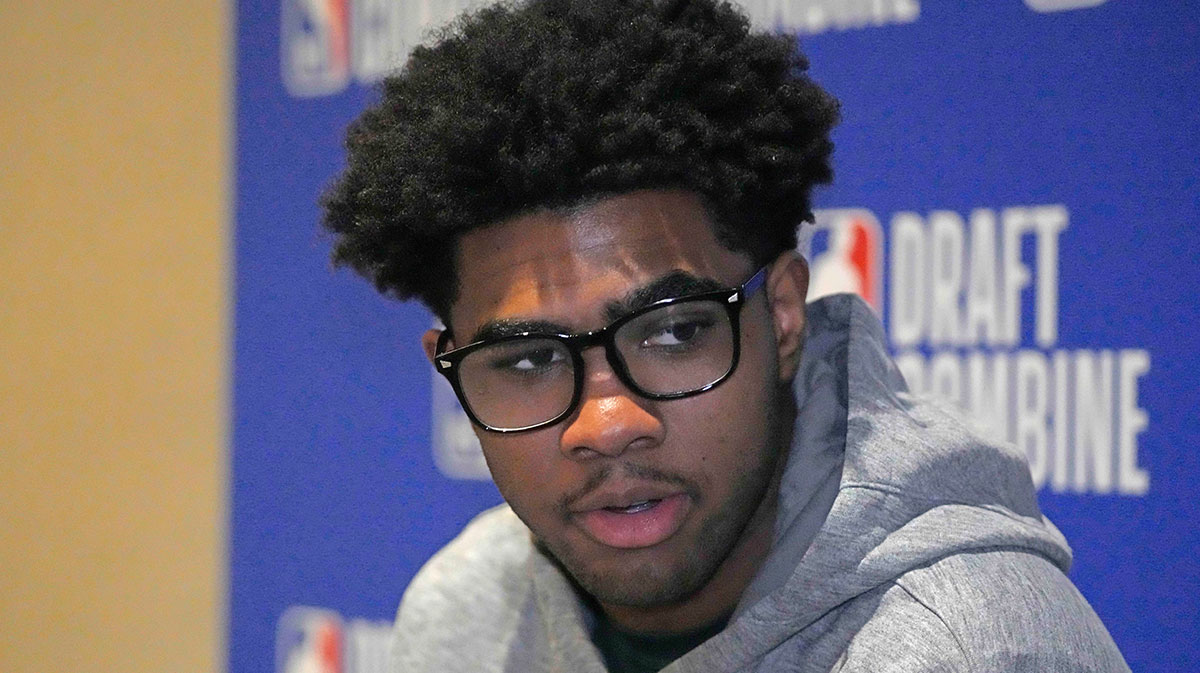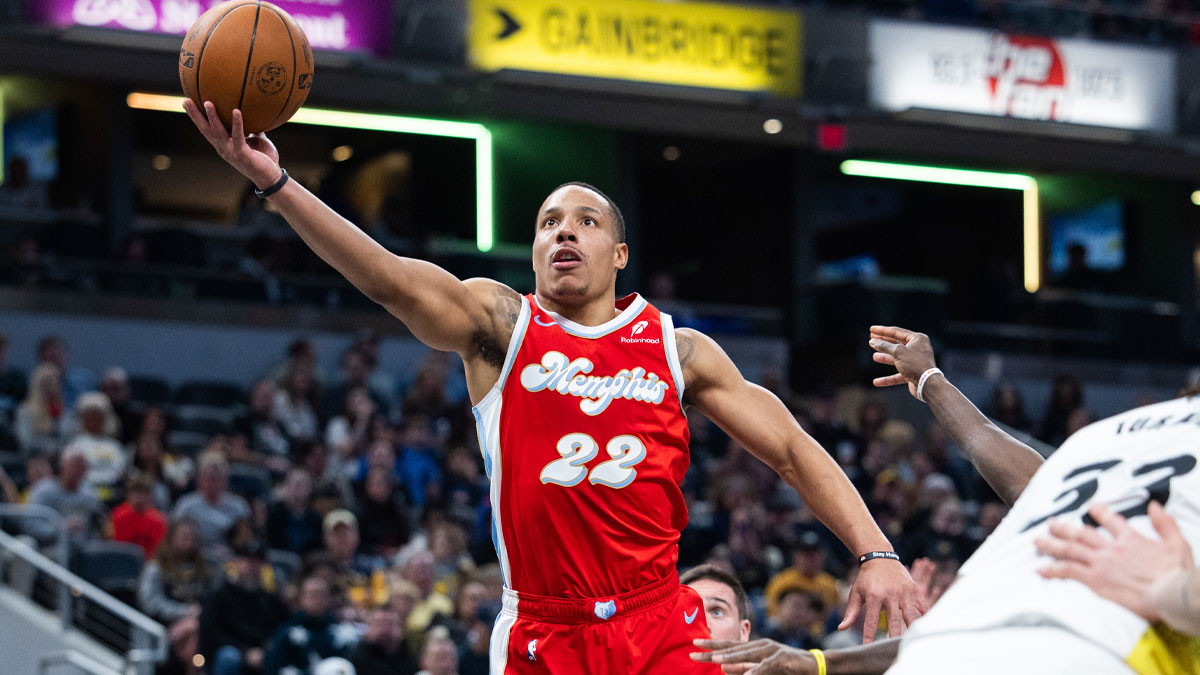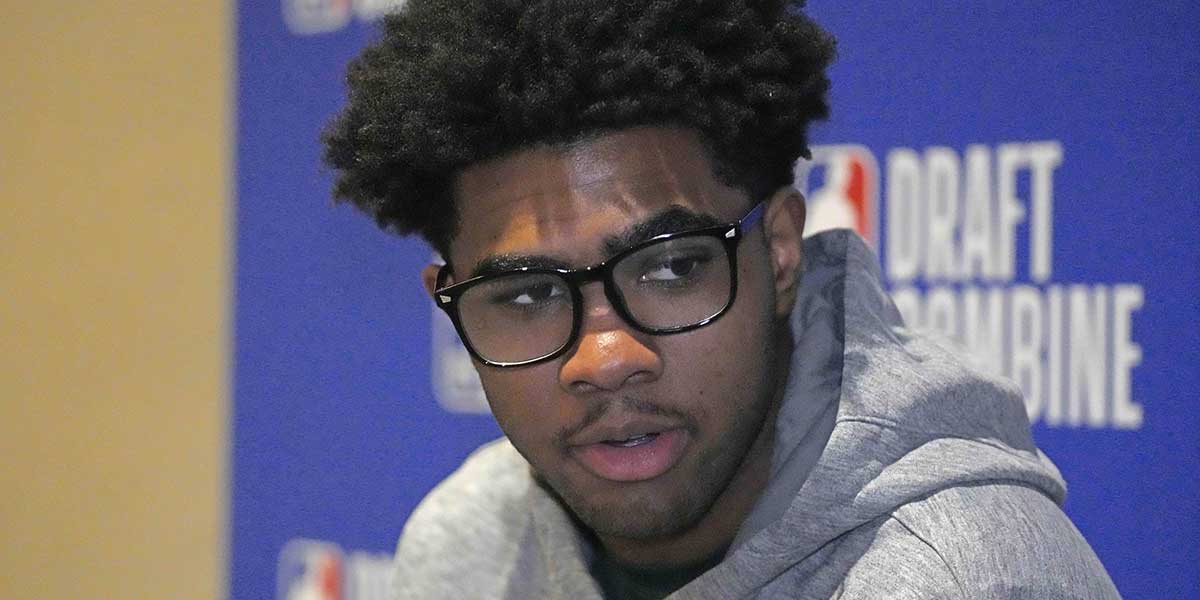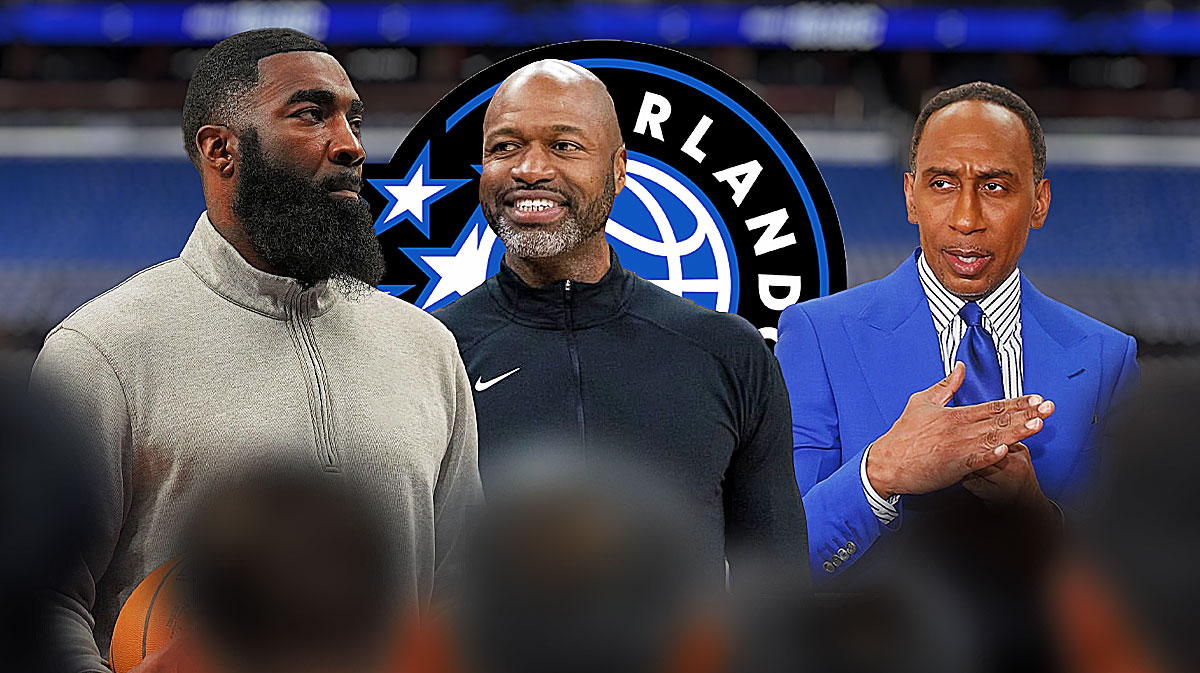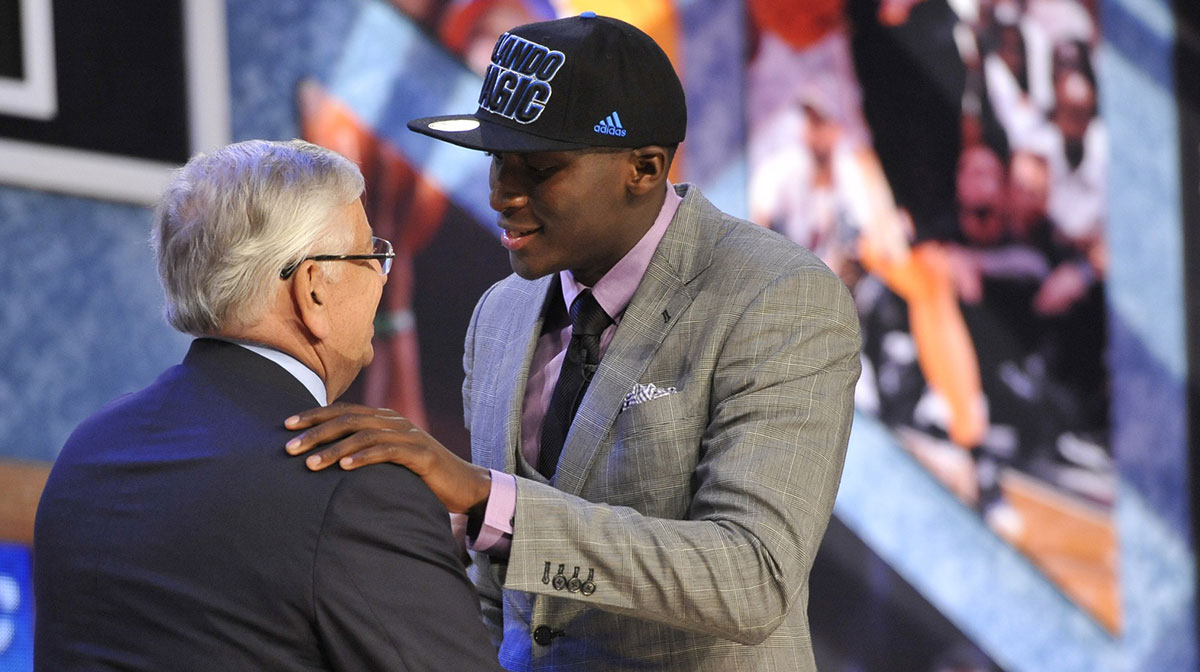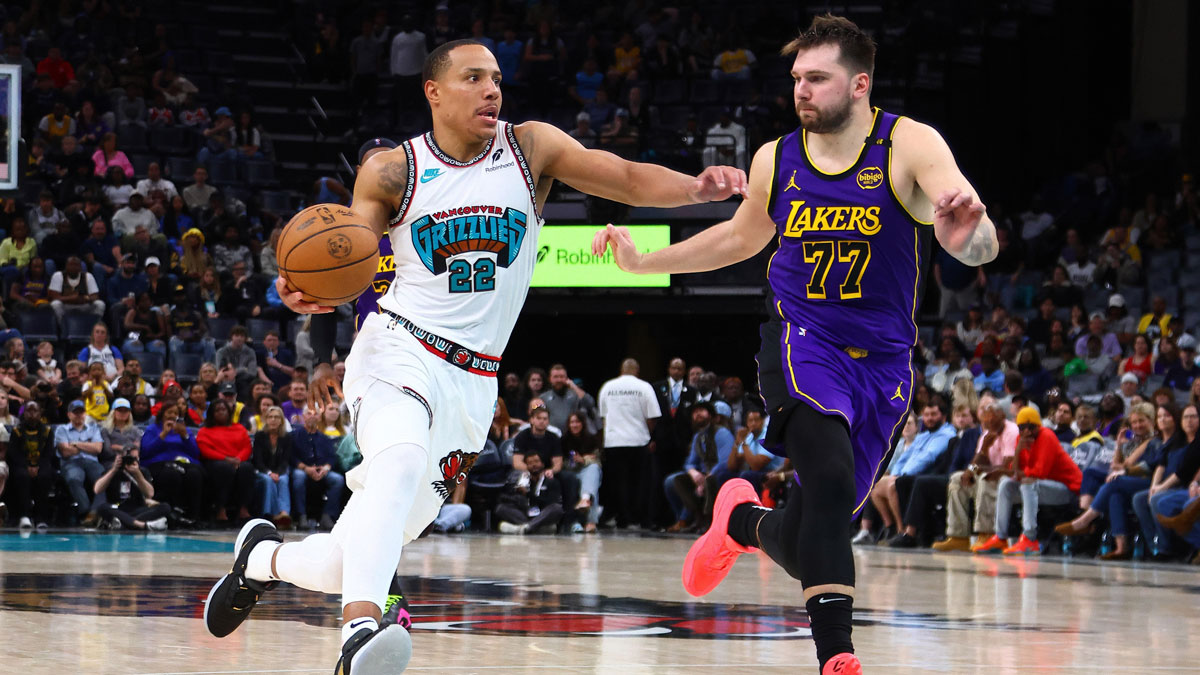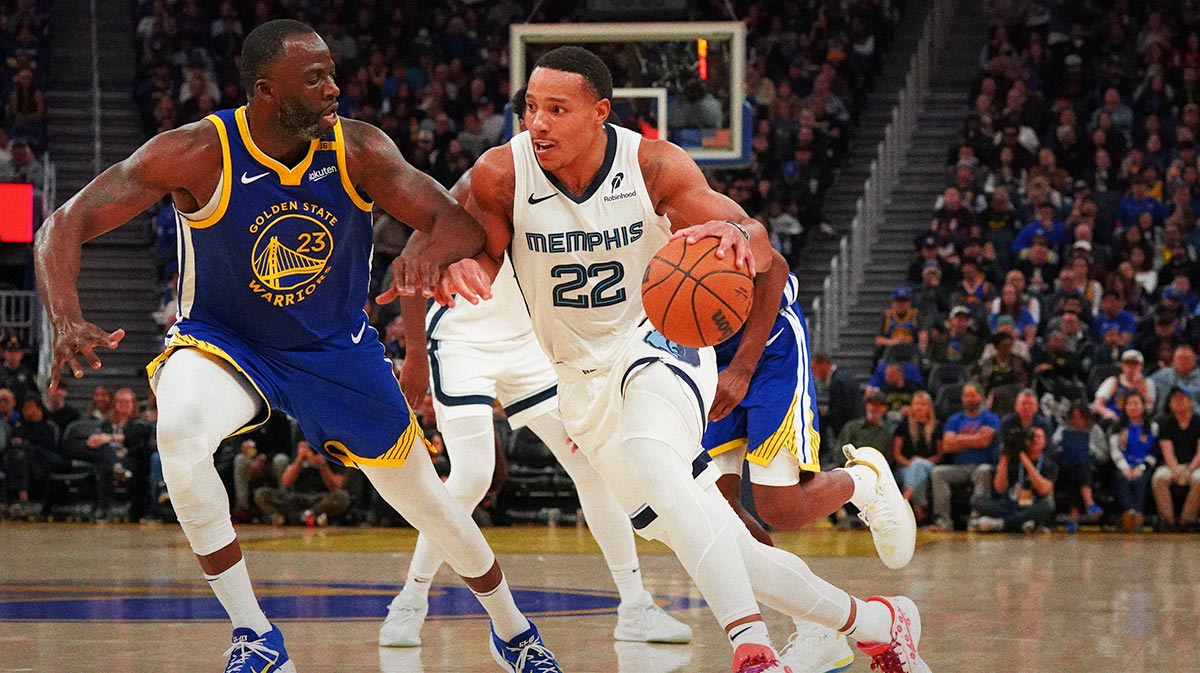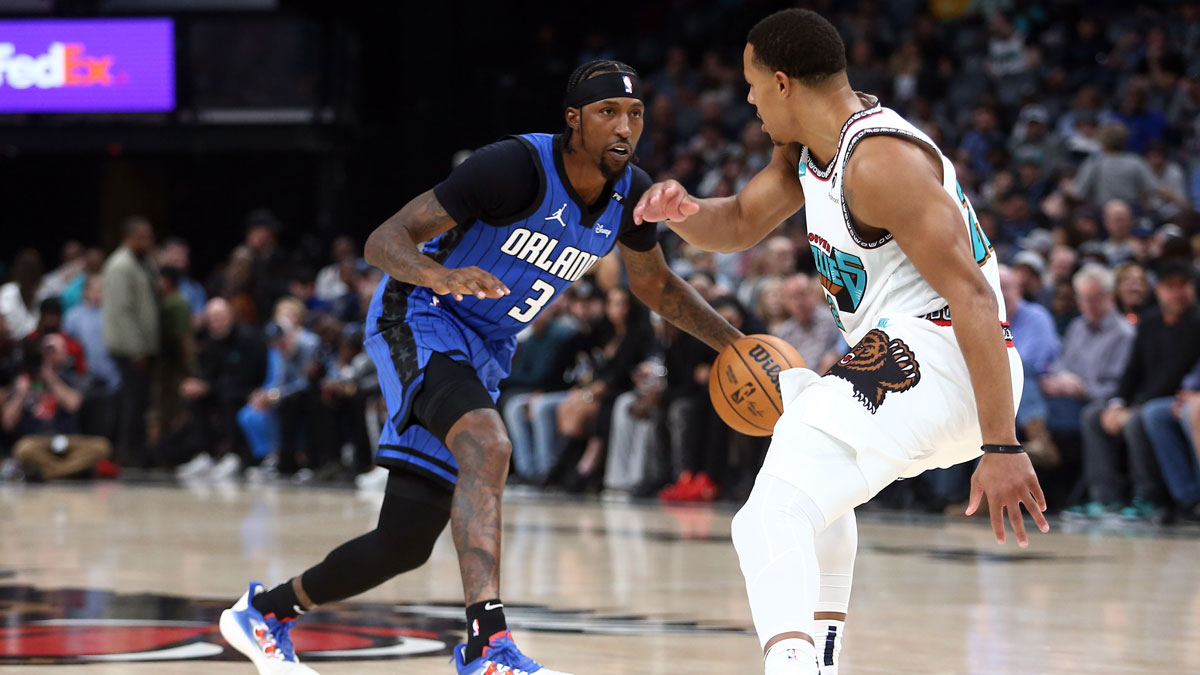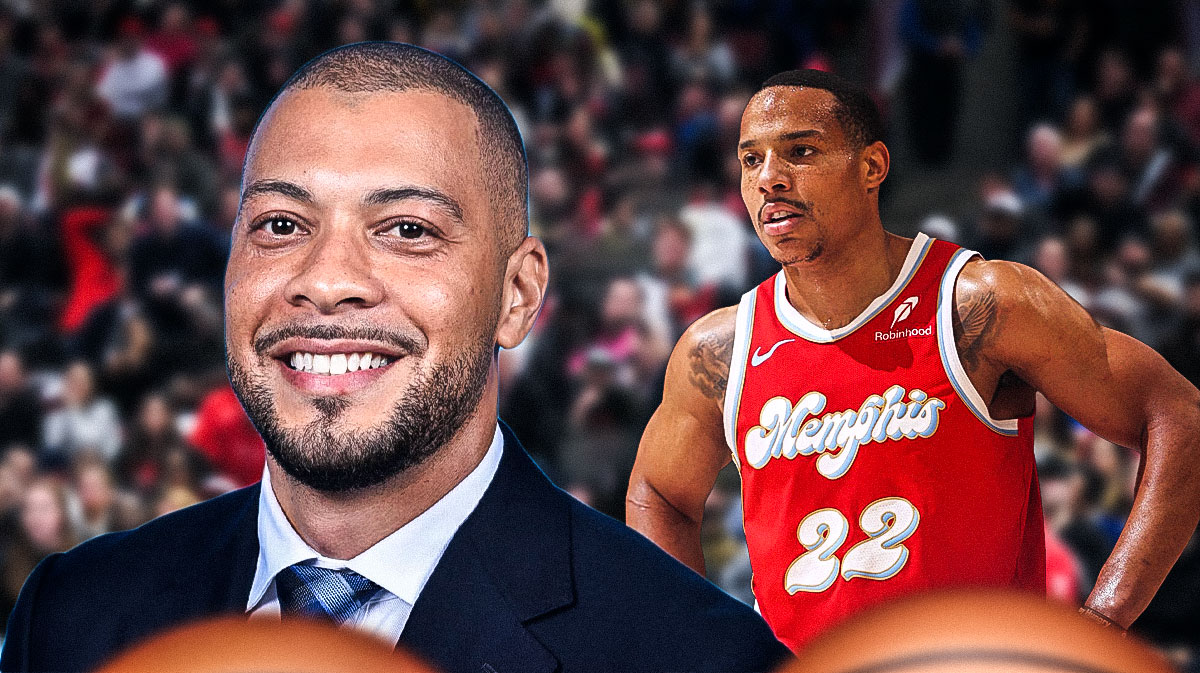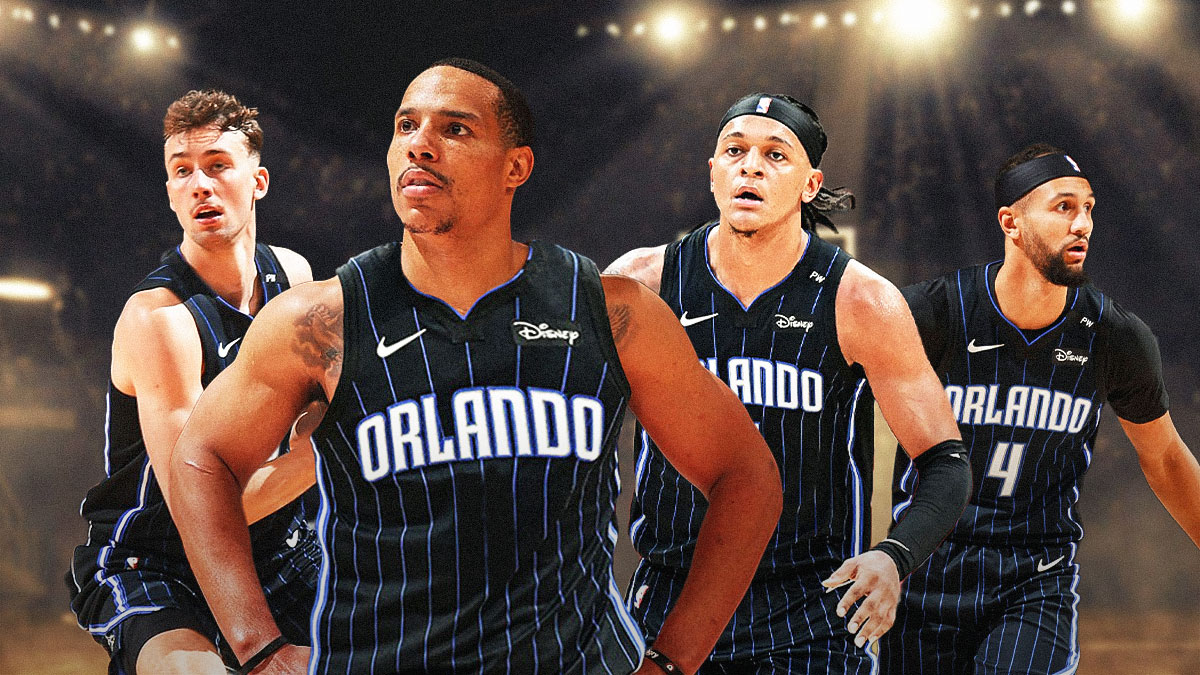In the NBA, summer is the time to look forward. The 2018 NBA Draft is complete and teams are celebrating their new rookie additions, offseason trades, and free agency signings. Optimism runs high for the most part and fans are focused on what's ahead for their favorite teams. New has everyone's attention.
Today, we're not looking forward, we're looking back. Specifically, we're looking at last year's NBA Draft.
With one season in the books, the Class of 2017 is shaping up to be one of the most interesting draft classes in recent NBA history. While the newly crowned Rookie of the Year Ben Simmons is not technically part of the same draft class — much to the chagrin of Donovan Mitchell — the class itself has no shortage of talent in the form of budding superstars like Mitchell and Jayson Tatum, or intriguing building blocks like Lauri Markkanen and John Collins. It's entirely possible we look back on 2017 in the same vein as legendary drafts like the 2003 class that gave us LeBron James, Carmelo Anthony, Chris Bosh, and Dwyane Wade, and that's no small praise.
Now's a good time to look ahead at how last year's crop of rookies may grow — after all, no draft class is defined by its first season alone.
Second-year improvements from the Markelle Fultzes and Josh Jacksons of the world are obvious, but what about players that might have flown a little further under the radar? Today, we're looking at (relatively) lesser-heralded players who might have an opportunity to emerge in the 2018 season. Crazy as it might sound, this draft class has a real chance to look even better a year from now.
Let's take a look at some examples.
Jonathan Isaac, Orlando Magic

Of the top 10 picks in the 2017 NBA Draft, Jonathan Isaac feels like the most forgotten. Despite being the sixth overall pick in the draft, the combination of the Orlando Magic's futility and a rookie season marred by injuries generally kept him out of the spotlight.
On paper, Isaac has everything you want from a modern big man — he's long, athletic, mobile, and can stretch the floor. His 7'3″ wingspan and lateral quickness are an obvious fit in an NBA where positional versatility and the ability to survive on a switch are of paramount importance.
Oh, and he's huge now.
Jonathan Isaac is definitely putting on some size. pic.twitter.com/zCK1kymqZT
— The Lando (@TheLando__) May 22, 2018
In the few games he played, his defensive upside was already apparent. Isaac is all arms and energy defensively, constantly moving and challenging passing lanes and attempts at the rim. He averaged over two blocks and two steals per 36 minutes, and Basketball Reference credited him with a healthy +3.1 defensive box plus-minus.
In a 93-86 loss to Toronto in March, the full scope of this defensive potential was put on display. Isaac simply terrorized the Raptors at all five positions, piling up five steals and two blocks. The slower Raptors' frontcourt had no answer for his quickness, and their ball-handlers couldn't find passing lanes around his seemingly endless arms.
It was on the other side of the ball that Isaac's lack of experience really showed this season. His path to becoming a positive offensive presence is clear — he shot 82 percent at the rim and 35 percent from behind the three-point arc — but Isaac doesn't seem to see it just yet. Of his 145 shot attempts, almost half came in the midrange, where he hit only a miserable 23 percent of those looks. He looked unsure about his role when the ball was in his hands and his best offensive moments came in situations where all the decision-making was essentially done for him.
Calling Isaac a “sophomore breakout candidate” is cheating a little bit. With how little he actually played, his rookie season was barely a step above a redshirt year. A lot of Isaac's flaws can be chalked up to his lack of floor time in the NBA and a healthy second year will be the perfect cure. With his skill set and the flashes we've seen, though, it's entirely possible we could be talking about him as a top-five player from his draft class this time next year. His 2018-19 campaign will be a sophomore season to pay very close attention to.
Josh Hart, Los Angeles Lakers:

For all the well-earned ribbing the Lakers have received for their desperate pursuit of star players, the franchise has actually drafted quite well in recent years. Recent top picks Lonzo Ball, Brandon Ingram, and Kyle Kuzma have developed into interesting contributors.
With how much players like Ball and Kuzma have dominated the headlines in Los Angeles, Josh Hart has flown a little further under the radar than he might have in another situation. Four-year college players aren't necessarily the most exciting prospects, but Hart's career at Villanova clearly set him up to contribute from the jump as an NBA rookie. Hart already looks the part of a legitimate rotation player only 63 games into his NBA career.
The most sensible comparison right now may be the Nuggets' Gary Harris, who is something of the ideal two-way glue guy at the guard position for Denver. While Harris was the Nuggets' second-leading scorer this season, Nikola Jokic and Jamal Murray were the tips of the spear, and Harris divined much of his value from the ways they set the table for his superb spot-up shooting and off-ball movement.
Hart provides value in similar but more focused ways. The Lakers have quickly zeroed in on Hart's strengths as a player and Luke Walton deserves a lot of credit for how he's set up Hart for success. The Nuggets give Harris freedom to put the ball on the floor, with 44 percent of his shots coming after two or more dribbles. Hart doesn't get quite as much leeway. The Lakers prefer to keep things in the hands of players like Ball and Ingram, which leads to nearly 70 percent of Hart's touches lasting two or fewer seconds.
This is probably for the better where Hart is concerned because he's at his best as an off-ball threat. Hart averages a healthy 1.15 points per possession as a spot-up shooter, 1.12 as an off-ball cutter, and 1.18 in transition, and these looks account for over 70 percent of his shot attempts. In contrast, he averages only 0.69 points per possession in isolation and 0.67 as a pick-and-roll ball handler — but those are only 11 percent of his shots.
The result has been a player who is comfortable, confident, and contributing at a much higher level than you'd expect at this stage from the 30th pick in the NBA Draft. Hart's minutes finally exploded in the beginning of February with the departure of Jordan Clarkson and he rapidly established himself as a capable starter. In his 11 games played after the All-Star Break, he posted per-game averages of 15-7-2 on 47/39/78 shooting splits. Across a full season, I'd count that as a breakout player.
The Lakers' offseason pursuit of superstars could end up costing them a few of the cornerstones of their youth movement. If LeBron James and/or Paul George are coming to town, any of these young players could (and arguably should) be on the table to help build the Lakers into a bona fide playoff contender right now. If the goal in Los Angeles is to win as soon as possible, though, Hart may well be the one they want to hang on to — he's ready right now, and very likely could open some eyes next season as the Lakers' starting two-guard.
Zach Collins, Portland Trail Blazers:

Last season, the Portland Trail Blazers bet big on Jusuf Nurkic, hoping the Nuggets castoff could take a step forward and become the third option Damian Lillard and C.J. McCollum have so desperately needed. Unfortunately, Nurkic hasn't been quite up to the task. He looked spectacularly average for much of the season and his bruising, slow-footed game looked poorly suited for the modern NBA, especially when held to the coals against the hyper-athletic Anthony Davis in the first round of the playoffs.
Luckily, the Blazers already have an intriguing young center waiting in the wings in the form of Zach Collins, who, despite a rookie season handicapped by inconsistent playing time and his own inefficiency, showed some reasons for Portland fans to be excited about his ceiling. As a whole, Collins' numbers do little to impress — he averaged 10 points and eight rebounds per 36 minutes on a dismal 47.5 true shooting percentage — and he only joined the rotation in December, averaging fairly minimal minutes. It's the flashes he showed that make him interesting.
On paper, Collins looks the part of a modern NBA center. He's a legit seven-footer without shoes, with a 7'1″ wingspan and impressive quickness and athleticism. He was a prolific shot-blocker at Gonzaga, swatting nearly two shots per game despite playing less than 20 minutes a night, but he's not a one-dimensional rim protector on defense — he can slot in at either frontcourt position and his quickness should allow him to survive against smaller players off switches. It may never be a major strength of his game, but he shouldn't be incredibly exploitable for opposing offenses, which will be important to his NBA longevity.
While Collins was largely inefficient as a rookie, his inside-out offensive game should translate well in years to come. He has a soft touch around the basket and can finish with either hand with great body control in the paint. His 63 percent shooting at the rim actually compares quite well to contemporaries like Kristaps Porzingis (60 percent) and Myles Turner (64 percent). Collins also showed some ability to put the ball on the floor and drive, which could become a valuable weapon in future years once his jumper has developed enough to earn defenses' respect.
That jumper has become a nearly essential tool for modern bigs and Collins does have it, though it's far from a finished product. Over 40 percent of his attempts on the year came from behind the arc and, while he made only 31 percent of them, the process behind them seemed sound — nearly all of his attempts came on spot-up looks or out of the pick-and-pop, the kind of looks you want a guy like him to get. It's likely going to be a matter of cleaning up his shot mechanics over the summer to develop more consistency, but when someone his size can make a shot like this, the upside is clear.
Players like Jusuf Nurkic are a conundrum for NBA teams. His inherent drawbacks are clear and their upside with him as a starting center might be limited, but he's also an established player who they can expect reasonably predictable level of performance from. Collins might be more volatile but with the Blazers capped-out and looking stagnant, his significant upside might very well be worth the gamble next season.
Dillon Brooks, Memphis Grizzlies:

While the 2017-18 Memphis Grizzlies can be summarily described as a major disappointment, Dillon Brooks provided a few reasons for optimism. In the team's final game, a 14-point loss to the Oklahoma City Thunder, Brooks went toe-to-toe with Thunder star Paul George, pouring in 36 points and finishing as the only Grizzlies player not to record a negative plus-minus. It was impressive and fitting way to cap off an unlikely rookie year for the second-round pick.
Brooks is a classic slashing wing who looks like a fit for most modern NBA teams on the offensive end. He can hit threes, attack mismatches in isolation, and get to the rim. The raw numbers don't really jump off the page 11/3/2 on 44/35/74 percent shooting splits — but for a second-round rookie who played in all 82 games for an awful Memphis team, there's a lot to be encouraged by.
Brooks isn't a hyper-explosive athlete, but he's a crafty attacker with a good feel for winning one-on-one matchups. He understands how to utilize space and he's skilled at changing speeds on the fly to use a defender's own momentum to work them out of position. Even skilled on-ball defenders like Victor Oladipo found themselves on skates against him at times.
Of course, Brooks is rough around the edges. Pull-up twos are arguably the most frustrating shots in NBA basketball and a player as skilled as he as at getting to the rim shouldn't be quite so willing to settle for them. Roughly 30 percent of Brooks' shots were classified as pull-ups by NBA Stats, and he posted an effective field goal percentage of only 33 percent on those looks. That's just not going to cut it.
What's more, his effort and efficiency waxed and waned as the year progressed. Like most of the Memphis roster, Brooks was wildly inconsistent on a game-to-game basis. Raw field goal percentage isn't typically the most reliable indicator of performance, but sometimes, stretches like these can tell the whole story.

These are not massive red flags for a player in his situation, though. Most of these issues are typical of young players pressed into large roles for terrible teams, and the toxic cloud surrounding the Grizzlies can't have helped matters. This is a team that fired their coach in November while one of their stars pouted his way through the year and the other underwent season-ending surgery. In ordinary circumstances, the season Dillon Brooks just had would have already qualified as a breakout for a guy who was picked 45th overall. This time, not many people seemed to notice.
The Grizzlies could be a long way away from returning to the Western Conference Playoffs, considering Mike Conley's worrisome health issues in recent seasons and the very reasonable possibility Marc Gasol decides to force his way out of town. The organization has struggled to cultivate young players in recent years, which makes the development of players like Brooks and 2018 draftee Jaren Jackson Jr. particularly crucial. Given a more sane work environment to perform in this season, I believe we could see him start to open some eyes.
D.J Wilson, Milwaukee Bucks:

Despite a fair amount of pre-draft sleeper buzz, we didn't see much of D.J. Wilson on Jason Kidd's and Joe Prunty's Bucks last season. The 17th pick was largely relegated to the rare garbage time appearance, seeing only 71 minutes of game action and taking a whopping sixteen total shots on the year. As far as players on this list go, Wilson is certainly the most unknown quantity, but as you might have guessed, there are some good reasons to expect a breakthrough for him in Year Two.
Foremost among those reasons is new head coach Mike Budenholzer and the unique offensive system he's going to bring to Milwaukee. Last season, the Bucks' offense simply lacked much in the way of creativity and they leaned far too heavily on their transition attack and the one-on-one abilities of Giannis Antetokounmpo and Khris Middleton. They actually scored at an impressively high rate in P&R situations, but rarely actually ran them. Milwaukee's P&R ball-handlers generated 0.88 points per possession (sixth-best in the NBA) while the roll men posted a 1.18 mark (second-best), but despite this, the Bucks ran the seventh- and sixth-fewest plays in the league for those players, respectively.
This won't continue under Coach Bud, who likely couldn't be further from Kidd and Prunty in terms of offensive design. Budenholzer loves his off-ball activity, screening, and ball movement, which are all things the Bucks have lacked. The 2015-16 Hawks rode his P&R-heavy attack to 60 wins and the sixth-best offensive efficiency in basketball that season, and they didn't have an individual player on the level of Giannis. The upside for his system in Milwaukee could be significant.
This is where Wilson comes in, because he might just be the ideal player to slot in as a hybrid frontcount player in this environment. He's a natural fit to excel in this kind of offense and he has experience with similar schemes from his time with John Beilein at Michigan. His quickness and bounce enable him to make plays rolling to the basket (although he needs to learn to finish stronger), and his nice shooting stroke will play well in the pick-and-pop.
Milwaukee's front office has a reputation for valuing length over almost any other attribute, infamously putting together a roster with a combined wingspan greater than a Boeing plane back in 2016. D.J. Wilson fits snugly within that philosophy with a frame similar to Isaac's: 6'10” with a wingspan of 7'3″. He's also fast — he gets up and down the court in a hurry and moves well in space, likely a product of growing up as a wing player. If there's one thing this Bucks team loves to do, it's run, and Wilson should be a quick fit in that regard.
Like Isaac, Wilson isn't terribly strong and likely can't handle starter's minutes at the center position, but for short stretches he could give opposing teams a headache. He's simply too quick and maneuverable for most centers to handle while also being significantly bigger than most forwards. This, combined with his shooting range and defensive upside, creates an interesting package of skills Budenholzer certainly won't ignore.
The Bucks have been searching for reliable role players around Giannis and Middleton for some time. They've succeeded in some respects — Eric Bledsoe, Malcolm Brogdon, and Tony Snell proved to be an effective backcourt rotation — but steady frontcourt contributors have always seemed to evade them. With Budenholzer on board, they might finally find one in the form of D.J. Wilson.

